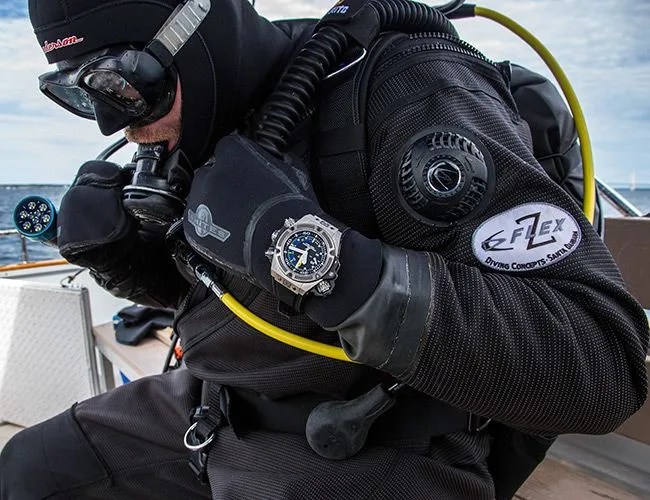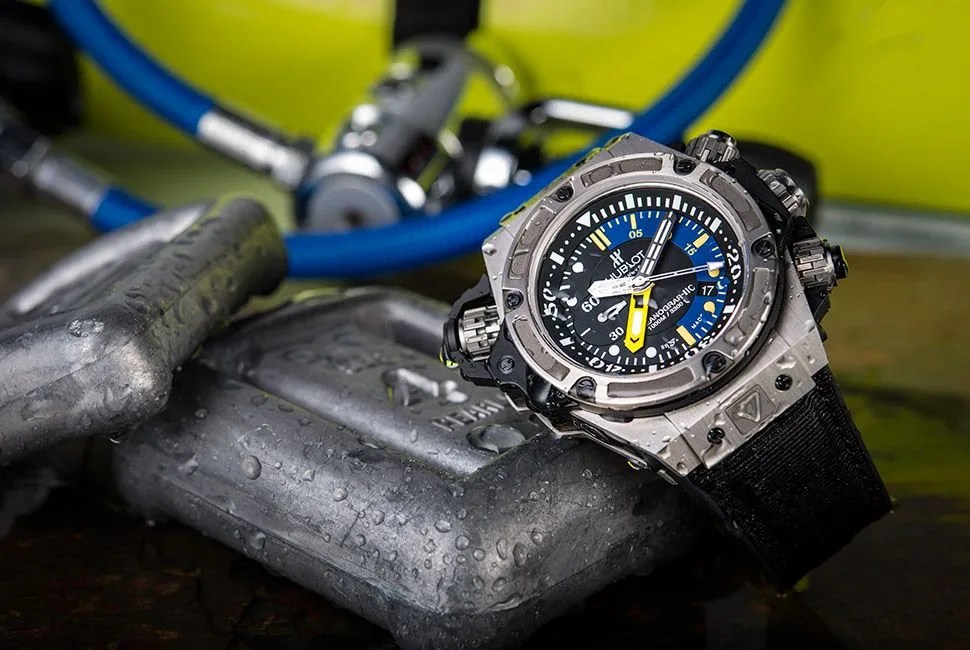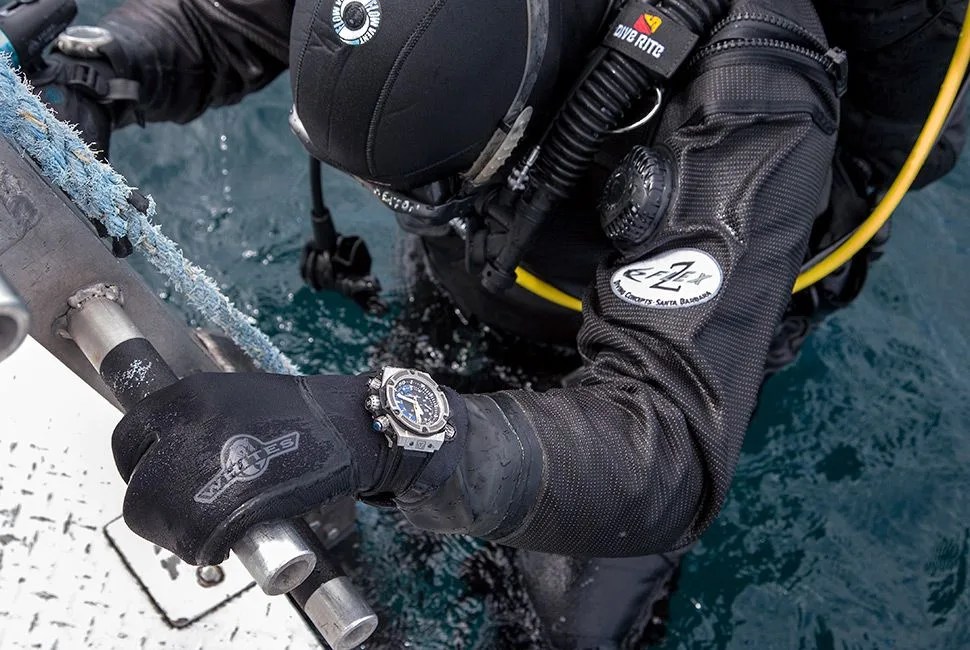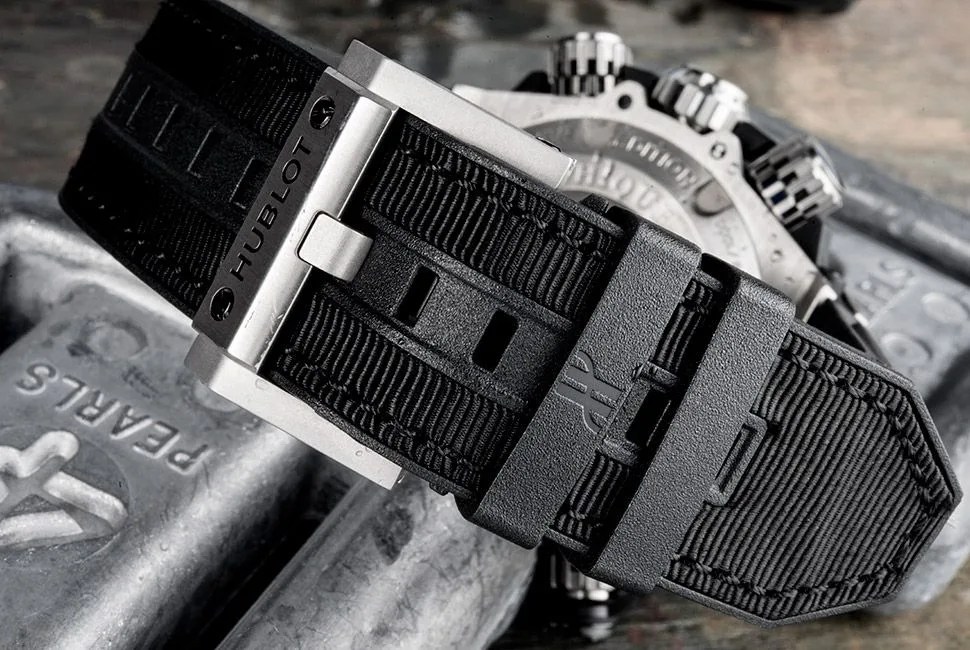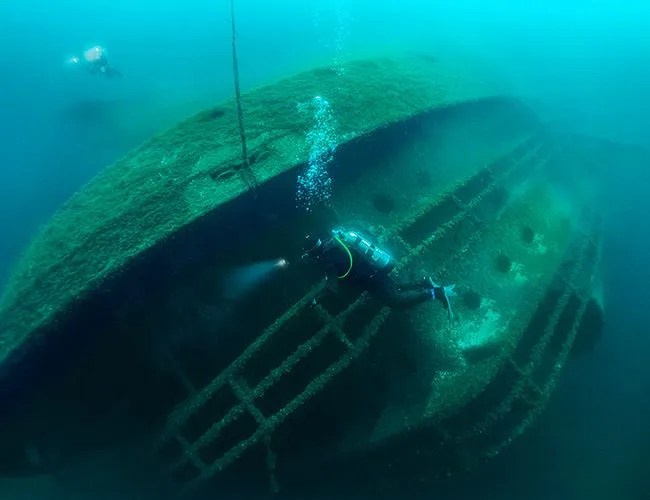6 photos
At 600 feet long, the SS Cedarville was once one of the largest ships to ply the Great Lakes. Built in 1927, it hauled limestone for nearly four decades until in 1965, a collision with a Norwegian freighter sent it to an icy demise in the Straits of Mackinac. 50 years later, it is the third-largest shipwreck in the Great Lakes and, in 100 feet of water, the easiest to dive. Swimming arounds its massive stern, which is permanently heeled over on its starboard side, I kick through the blown-out skylights of the engine room. There, in the beam of my torch I see a panel of gauges, still intact after all these years, as they were on the day she went down. This is where the Cedarville‘s engineers toiled as the ship was sinking, trying vainly to push her to shallow water, and ultimately losing their lives in the process.
Shipwrecks, for all their foreboding size, hide their secrets on a smaller scale, beckoning the diver to come closer, peer in and learn their real stories. The same is true for the dive watch on my wrist, the Hublot Big Bang King Power Oceanographic 1000. It is a watch that at first glance is all about massive dimensions but upon closer examination, reveals some surprising details.
Hublot is an easy target for both scorn and admiration, and not only because most of its watches are gargantuan bullseyes. Watch enthusiasts like to criticize the brand for its shiny dinner-plate-sized timepieces that it parades on the wrists of hip-hop moguls and basketball stars. But at the same time, it’s hard to look away because Hublot isn’t mere bling; beyond its oversized watches and marketing budget is a company that is building some of the most interesting and innovative timepieces in the business. Its resurrection at the hands of watch industry guru Jean-Claude Biver in the early 2000s and the subsequent introduction of its in-house UNICO chronograph movements have produced a powerhouse brand with watches that no one else would dare build. The Big Bang King Power Oceanographic 1000 is one of those bold watches that gives the wearer as many reasons to look closer as it does to look away.
The Oceanographic 1000 is part of a small family of dive watches Hublot named for the Oceanographic Museum of Monaco, with which the company is partnered. The “1000” stands for the water-resistance rating of the watch in meters, a healthy kilometer into the abyss where no human outside of a submarine will likely find himself, much less survive. But depth ratings are the dive watch equivalent of the space race, with everyone aiming for the bottom. To withstand 100 atmospheres of water pressure requires a strong case and watertight construction. For the Oceanographic, the former comes courtesy of its three-part 48mm titanium and carbon-composite case, while the latter is thanks to the ingenious screw-in crowns and pushers that give the watch its distinctive appearance.
The engineering and manufacturing of the push-pieces alone are enough to reset opinions about Hublot.
A chronograph is inherently at higher risk of water leakage simply because it has two extra holes in the case. To mitigate this risk, the push-pieces on the Oceanographic lock down firmly to seal them and prevent accidental actuation while diving. While locking push-pieces are nothing new, these go a step further. The collars are spring-loaded precision-fit teeth that engage when pushed and then screw in with an action that not only inspires confidence but is a pleasure to operate. The engineering and manufacturing of the push-pieces alone are enough to reset opinions about Hublot.
